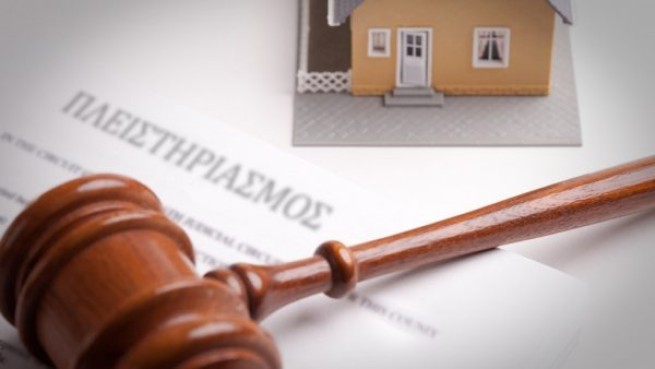More than 20,000 over-indebted borrowers and freelancers with debts to the Internal Revenue Service (as well as to insurance funds) managed to save their first home, i.e. get under a special protection regime or get a second chance without the pressure of collectors, courts and coercive measures.
These include those who joined the Katseli law, whose cases have been pending for years. All these cases were resolved through the main tools of the new bankruptcy code. The extrajudicial mechanism met the aspirations of 7257 borrowers with debts to banks, insurance funds and the state, who were threatened with loss of their homes. They managed to repay the total debt, which amounted to 2.65 billion euros. These agreements included a “debt haircut” of more than 30% and an extension of the repayment period from 14 to 26 years.
The average debt repaid through the electronic platform of the out-of-court mechanism amounted to 364,970 euros. The total reduction of these debts reached 783 million euros.
The increase in the maturity of debts to the state is 17 years, housing loans – 26 years, business loans – 19 years and consumer loans – 14 years. The data show that, overall, eight out of 10 applications to the extrajudicial mechanism were successful in repayment.
The percentage of approval of the proposed solutions by debtors and creditors has changed in the corresponding percentages.
It is noted that the electronic platform offers a certain solution based on the algorithm, which is agreed upon by debtors and creditors. Ultimately, the decision can be rejected by both the debtor and the creditor.
With the new amendment, lenders and loan managers must publish reasons for rejectionto indirectly seek sustainable solutions to be taken by the debtors.
Vulnerable debtors
To date, 5,100 people have received the “Vulnerable Borrower Certificate” (βεβαίωση ευάλωτου δανειολήπτη), although the total expected number of applications was 45,000. This was because the majority did not agree with the abolition of banking and tax secrecy. This is also the reason why the non-judicial system gets bogged down in submitted applications and does not reach the final stage for years.
One of the provisions of the law for vulnerable debtors is suspension of auctions and their inclusion in the so-called “temporary first home protection program” before being transferred to the register of an agency for the acquisition and re-lease of real estate The agency will then forcibly acquire the vulnerable borrower’s property and lease it for 12 years.
Vulnerable person after joining the Interim Program and as long as the property is owned by the agency is entitled to a housing allowance in the amount of 70 to 210 euros per month.
A vulnerable borrower can buy back their property whenever they want within a 12-year period or can revert to the issue at the end of the payment period.
During all this time, the property is not threatened by auction, unless the debtor is in arrears for more than three installments in a row. In addition, vulnerable people who are certified are also eligible for other support measures, such as subsidizing a 50% increase in (floating) mortgage interest rates from last July levels. Applications for participation in the program closed on July 31.
https://rua.gr/news/obschestvo/51976-afiny-pensionerku-vybrosili-iz-ejo-doma-za-dolg-v-15-000-evro.html
Bankruptcy
As of yesterday, 5,293 individuals and self-employed persons and businesses have filed for bankruptcy. Of these, 2186 received a court number. The new bankruptcy provides that those who cannot find a solution either out of court or as vulnerable can file for bankruptcy even if they are individuals.
Bankruptcy provides relief from liability, claims and prosecutions end, and the former debtor can start a new life. If he has assets, they are liquidated (sold) within the amount of the debt.
If they are not enough to pay off the debt, everything that is available is confiscated, and the balance of the debt is written off. If there is no asset, then it remains for a year or two in the register, and the over-indebted person receives an exemption from claims against it. During this entire period and after the release of claims from creditors and all measures are terminated. That is why this part of the bankruptcy is also called the “second chance”.
https://rua.gr/news/sobmn/53847-zhenshchine-s-revmatoidnym-artritom-dali-pyat-minut-chtoby-vyselitsya-iz-doma.html
Consideration of the case in court and out of court
Prior to the new bankruptcy and out-of-court proceedings, some 47,000 cases were pending for several years. With the new bankruptcy system and a series of interventions to expedite lawsuits, that number dropped to 15,000.
Of the 47,000 cases, 32,900 have already passed through the courtrooms, where 42% of citizens were denied protection of their homes. The main reason was that they did not meet the criteria.
https://rua.gr/news/sobmn/55108-81-letnij-invalida-vybrosili-na-ulitsu-ne-pozvoliv-emu-zabrat-dazhe-odezhdu.html
All those rejected (more than 12 thousand) had the right and joined the extrajudicial mechanism of regulation. That is, they can pay off debts that they could not get rid of under the Katseli law. Nearly 20,000 managed to settle and protect their place of residence.







More Stories
Greece: growth in deposits from households and businesses in March 2024
How much will it cost a Greek family to celebrate Easter?
EU employment record: Greece "stuck" in a low position